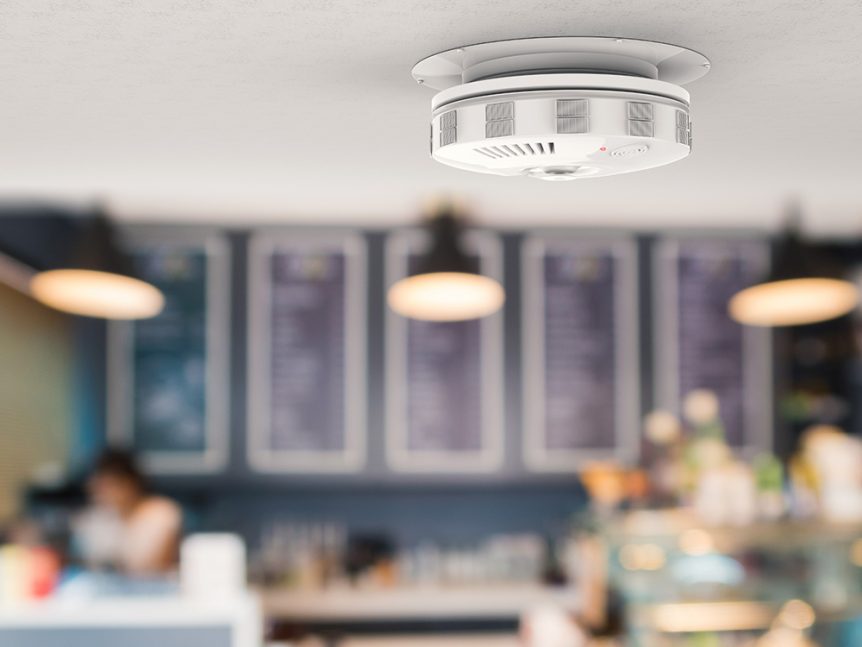We often think of fire prevention as something that is taught to kids, however it is important for all ages to know and understand the sounds of fire safety. Remember in the midst of a fire, only a few seconds can be the difference between a little property damage and a life-or-death situation. Here are some facts from First Alert:
- 3 of every 5 home fire deaths occur in homes with no functional smoke alarm and less that 50% of homeowners don’t have an escape plan. Cooking is the leading cause of home fire.
- 60% of consumers do not test their smoke and CO alarms on a regular basis.
- Carbon monoxide (CO) is the leading cause of accidental poisoning in the Unites States, however only 47% of homeowners reported having an operational CO alarm.
The Differences Between Smoke & CO Alarms
Are you wondering if there is a difference between a smoke alarm and a carbon monoxide alarm, and if you actually need both in your home, then here’s what you should know:
- Smoke alarms actually detect smoke and then alert you of the issue.
- Carbon monoxide detectors are used to detect odorless and colorless CO gas. If you are exposed to CO, you may fall unconscious before you even realize that you’ve been exposed.
The Sounds of Fire Safety
Now that you know the differences between these alarms, let’s learn how these devices keep you safe and what their sounds indicate. Your life can be saved by learning what each sound means.
Beeps – a beeping alarm means smoke or carbon monoxide is present. Get out and stay out. Call 911.
- Smoke Alarms – continued loud beeps in a set of three warn of active fire or smoke. If you hear this, evacuate the property and call 911.
- CO Alarms – continued loud beeps in a set of four warn of carbon monoxide in your house. Go outside and call 911.
Chirping -a chirping alarm means the battery or the entire alarm must be replaced.
- Smoke Alarms – your battery is low if the smoke alarm lets out a chirping sound periodically. Change the batteries. If the chirping sound continues you need to replace the smoke alarm, which should be replaced every 10 years.
- CO Alarms – if you hear periodic chirping in your carbon monoxide alarm, then the batteries are probably low so replace batteries. If chirping continues, replace the CO alarm.
Placement of Fire Safety Devices
- Smoke alarms should be placed in every bedroom, hallway and level of the property. Do not install a smoke alarm in bathrooms or kitchens.
- Carbon monoxide detectors should be placed in every bedroom and on every level of home.
- Keep a fire extinguisher in your kitchen and garage, as well as on every level of the home.
How to Choose the Best Alarm
When researching the best smoke and CO alarms for your home, look for one with a testing laboratory which means the company meets certain guidelines and standards in creating their particular device. You can choose a combination alarm that detects smoke and carbon monoxide throughout your entire house and these alarms do need to be installed by professionals.
Fire Safety Sounds Can Save Your Life
As you can see, it is important to know the difference between beeps and chirps on your safety devices, as this can save your life. Remember to test your devices every month and to educate all family members about the sounds.
And, if you should ever need experts in fire restoration, call The Jones Companies today!

